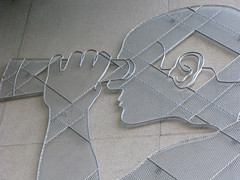
Transactions do not have a time dimension. They are atomic and exist by themselves. Transactions exist in isolation.
On the other hand, relationships do have a time dimension.
For example, the ease with which we can find others online (e.g. friends from high school or college) now means that it’s easier for long-running relationships to be created. (This is extremely top-of-mind, as just this week I’ve been fortunate enough to reconnect with two old buddies, one from high school and one from college, both of whom I haven’t spent any notable amount of time with in over 20 years.)
Up until recently, I wonder if it was much more difficult to create long-running relationships. It seems to me that, historically, most "relationships" were with one’s contemporaries (literally: "with time"). We’d have connections with those who were in the same time and place that we were. It now seems easier to connect the transactions into a flow than it was even a couple of years ago.
I wonder if the business focus on the "transaction" is an artifact of the historical difficulty of representing information that has a time dimension? Or, perhaps, as we moved into the database age, the relative difficulty of representing change-over-time versus simply representing a transactional row lead to this focus on the transaction in isolation, as opposed to tracking the big picture of the evolution of a relationship over years?
It’s the difference between this and this. Which one really communicates more information?
Edited to add: I think this transactional mindset affects both customers and vendors, and is one of the things that I hope we can address with VRM.
photo: pizzodisevo








